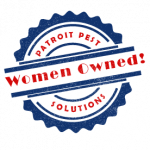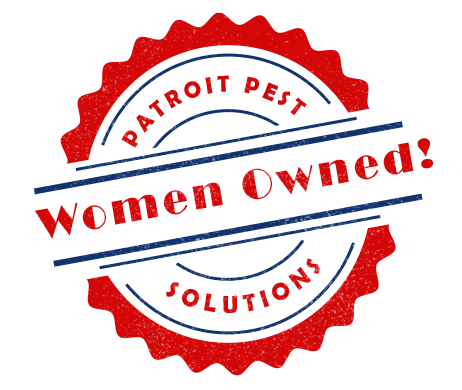Summer brings barbecues, pool parties, and outdoor gatherings—but it also brings unwelcome guests in the form of wasps. These aggressive insects can turn a pleasant afternoon into a nightmare, especially for those with allergies. Understanding how to prevent wasp infestations and knowing when to call professionals like Patriot Pest Solutions can save you from painful stings and property damage.
Unlike their beneficial bee cousins, wasps are territorial predators that become increasingly aggressive as the season progresses. They’re attracted to sweet foods, protein sources, and sheltered nesting spots around your home. Once they establish a colony, removing them becomes a dangerous task that requires professional expertise.
This comprehensive guide will help you identify wasp species, implement effective prevention strategies, and understand when professional intervention becomes necessary for your safety and peace of mind.
Common Wasp Species in Your Area
Yellow Jackets
Yellow jackets are the most aggressive wasp species you’ll encounter. These black and yellow insects build paper-like nests in wall voids, under eaves, or in ground cavities. They’re particularly problematic because they scavenge for food at outdoor events and can sting multiple times without losing their stinger.
Paper Wasps
Paper wasps create umbrella-shaped nests under roof overhangs, deck railings, and porch ceilings. While less aggressive than yellow jackets, they will defend their nests vigorously when threatened. These wasps have longer legs that dangle during flight, making them easily identifiable.
Hornets
The largest wasp species, hornets build aerial nests in trees or attached to structures. Their size alone makes them intimidating, but their potent venom and aggressive nature when defending colonies make them particularly dangerous. Professional removal is always recommended for hornet nests.
Signs of Wasp Activity Around Your Property
Recognizing early warning signs helps prevent small problems from becoming major infestations. Increased wasp sightings around your home, especially near food sources or potential nesting sites, indicates nearby colony activity.
Look for small, gray paper-like structures under eaves, in garden sheds, or attached to outdoor furniture. These early-stage nests are easier to address than fully established colonies but still require caution.
Wasps flying in and out of small openings in walls, soffits, or ground areas suggests an established nest inside the structure. This scenario requires immediate professional attention, as DIY removal attempts often result in multiple stings and incomplete nest elimination.
Effective Prevention Strategies
Eliminate Food Sources
Keep outdoor dining areas clean by immediately disposing of food scraps and covering beverages. Wasps are attracted to sugary drinks, meat, and fallen fruit. Regularly clean garbage cans and ensure lids fit tightly to prevent scavenging opportunities.
Seal Entry Points
Inspect your home’s exterior for gaps, cracks, and openings that wasps might use for nesting. Seal holes in siding, repair damaged screens, and caulk gaps around windows and doors. Pay special attention to areas where utilities enter your home.
Remove Attractants
Eliminate standing water sources by fixing leaky faucets, emptying containers after rain, and ensuring proper drainage around your property. Wasps need water for nest construction and cooling their colonies during hot weather.
Maintain Landscaping
Trim bushes and trees away from your home’s exterior to reduce potential nesting sites. Remove dead wood, debris piles, and unused items that provide sheltered spaces for colony establishment.
Natural Deterrent Methods
Several natural approaches can help discourage wasp activity without harmful chemicals. Planting mint, eucalyptus, or citronella around outdoor living spaces creates natural barriers that wasps tend to avoid.
Essential oil sprays containing peppermint or lemongrass can be applied to potential nesting areas as a deterrent. Reapply these treatments regularly, especially after rain, to maintain effectiveness.
Fake wasp nests purchased from garden centers or homemade versions using brown paper bags can sometimes deter nest-building, as wasps are territorial and avoid areas with existing colonies.
Why Professional Treatment is Often Necessary
Wasp removal presents significant safety risks that make professional intervention the wisest choice. Disturbing a nest triggers aggressive defensive behavior, often resulting in multiple stings that can be life-threatening for allergic individuals.
Professional pest control technicians have specialized equipment, protective gear, and treatment methods that ensure complete nest elimination. They can access difficult locations safely and apply targeted treatments that prevent colony re-establishment.
Incomplete nest removal often leads to surviving wasps rebuilding in the same location or nearby areas. Professional treatment ensures thorough colony elimination and includes follow-up services to prevent reinfestation.
The Patriot Pest Solutions Approach
Patriot Pest Solutions understands that wasp control requires expertise, safety protocols, and effective treatment methods. Their trained technicians assess each situation individually, determining the species involved, nest location, and appropriate treatment strategy.
The company uses targeted applications that eliminate colonies while minimizing environmental impact. Their approach includes identifying and sealing potential entry points to prevent future infestations, providing comprehensive property protection.
Customer safety remains the top priority throughout the treatment process. Patriot Pest Solutions’ technicians explain necessary precautions, coordinate treatment timing to minimize disruption, and provide follow-up services to ensure complete resolution.
When to Call Professional Help Immediately
Certain situations require immediate professional intervention for safety reasons. Large, established nests pose significant danger and should never be approached without proper equipment and expertise.
If you’ve discovered nests inside wall voids, attics, or other structural areas, professional removal prevents property damage and ensures complete colony elimination. These hidden nests often extend further than visible portions suggest.
Multiple nest locations around your property indicate established wasp activity that requires comprehensive treatment beyond DIY capabilities. Professional assessment identifies all problem areas and implements coordinated treatment strategies.
Individuals with known allergies to wasp stings should never attempt nest removal themselves. Even minor disturbances can trigger aggressive responses that put allergic individuals at severe risk.
Protecting Your Family and Property
Effective wasp control protects both your family’s safety and property value. Established colonies can cause structural damage when nests expand inside walls or attics, while aggressive species pose ongoing safety threats to residents and visitors.
Professional treatment provides peace of mind during outdoor activities and gatherings. Knowing your property is protected allows you to enjoy your outdoor spaces without constant worry about wasp encounters.
Regular professional inspections during peak wasp season help identify potential problems before they become dangerous situations. Early intervention is always more effective and cost-efficient than dealing with established infestations.




